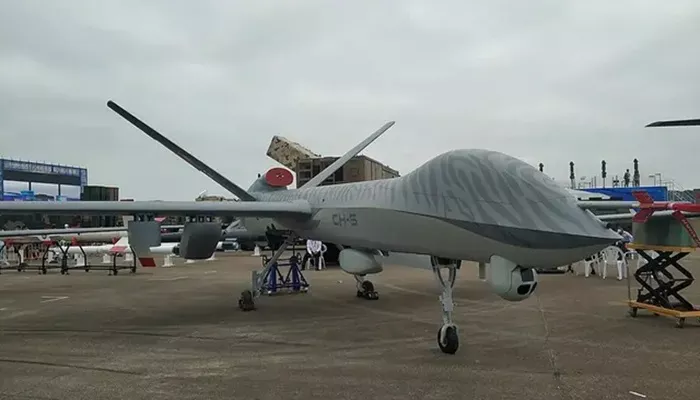Defense researchers in China have created a new plasma excitation technology that greatly improves the efficiency of high-altitude drones. This technology uses electrically charged particles, called plasma, generated on the drone’s wings to control airflow. By doing this, it enhances the drone’s aerodynamics and allows it to fly longer.
High-altitude drones, like the US RQ-4 Global Hawk or China’s CH-9, can fly above 32,800 feet (10,000 meters) and stay in the air for up to 40 hours. However, at these heights, the air is much thinner. This means there are fewer air molecules to help generate the lift needed to keep the drone flying.
The thin air reduces the drone’s aerodynamic performance, especially its lift. Lift is the force that pushes the drone upward and helps it stay in the sky. When there is less air moving over the wings, it becomes harder for the drone to stay airborne. This problem is even bigger when the drone flies slowly or carries heavy equipment. Engineers find it very challenging to keep drones efficient at high altitudes for long periods.
Using Plasma to Improve Flight Endurance
Flying slower saves fuel and extends the drone’s mission time. But flying slowly also lowers lift, especially when the airflow over the wings begins to break away, a problem called airflow separation. Researchers noticed that when drone speed drops from 15 meters per second to 8 meters per second (about 18.6 mph to 30 kph), the lift-to-drag ratio drops by more than 60%.
To solve this, a team at the China Aerodynamics Research and Development Centre (CARDC) in Sichuan tested a plasma generator on drone wings in a wind tunnel. The generator sends 16,000 volts to ionize the air 8,000 times per second. This creates plasma bursts—charged air particles—that interact with the airflow around the wings.
The plasma helps keep the airflow attached to the wing, preventing separation. According to the researchers, this improves the lift-to-drag ratio by as much as 88%. This means drones can maintain good lift even at very low speeds.
“This technology has great potential to extend the flight endurance of high-altitude drones,” said Zhang Xin, a senior scientist leading the project at the State Key Laboratory of Aerodynamics at CARDC.
Challenges and Future Control Systems
Although the plasma technology is powerful, it also creates plasma vortices—swirling air currents that can make the drone unstable during sharp climbs or turns.
Because of this, the technology carries some risks without proper control. To fix this, the team is developing a ‘closed-loop control system’. This system will adjust the plasma output in real-time, based on the drone’s movements. It will work like an autopilot specifically designed to control plasma effects.
If successful, this plasma technology could allow drones to fly much longer without needing to refuel or recharge. This improvement would benefit many areas, such as reconnaissance, disaster response, and military surveillance.
Similar plasma systems might also be used on other types of aircraft or space vehicles, where the air is thin or conditions are difficult. As the world focuses more on green aviation and energy-efficient flight, plasma control technology may become very important.
“Long-endurance drones are essential for many missions—military and civilian alike—including surveillance and disaster assessment,” the research team noted. Some experts believe this technology could give China a leading position in the design of next-generation aircraft and drones, helping to advance aerospace innovation.

